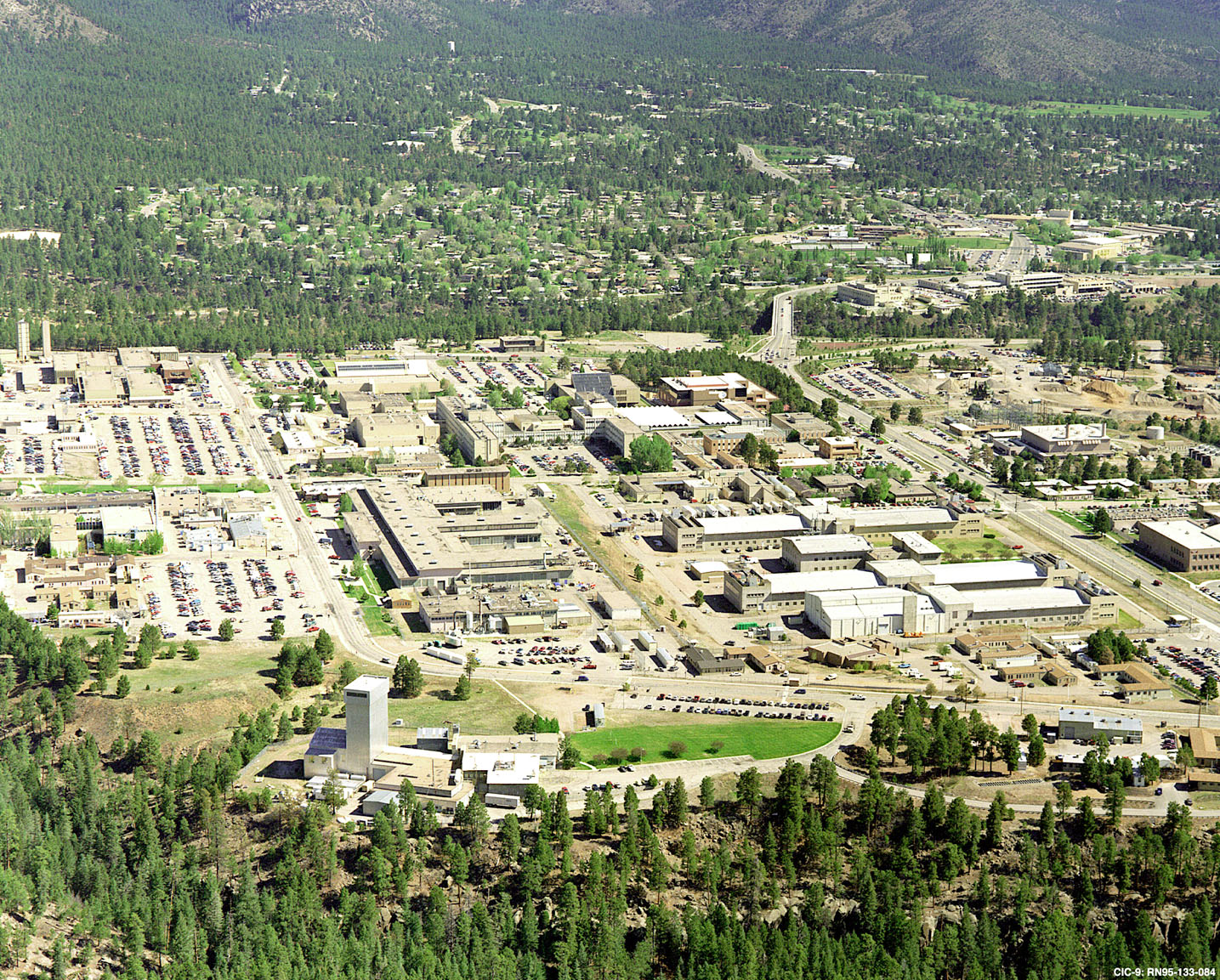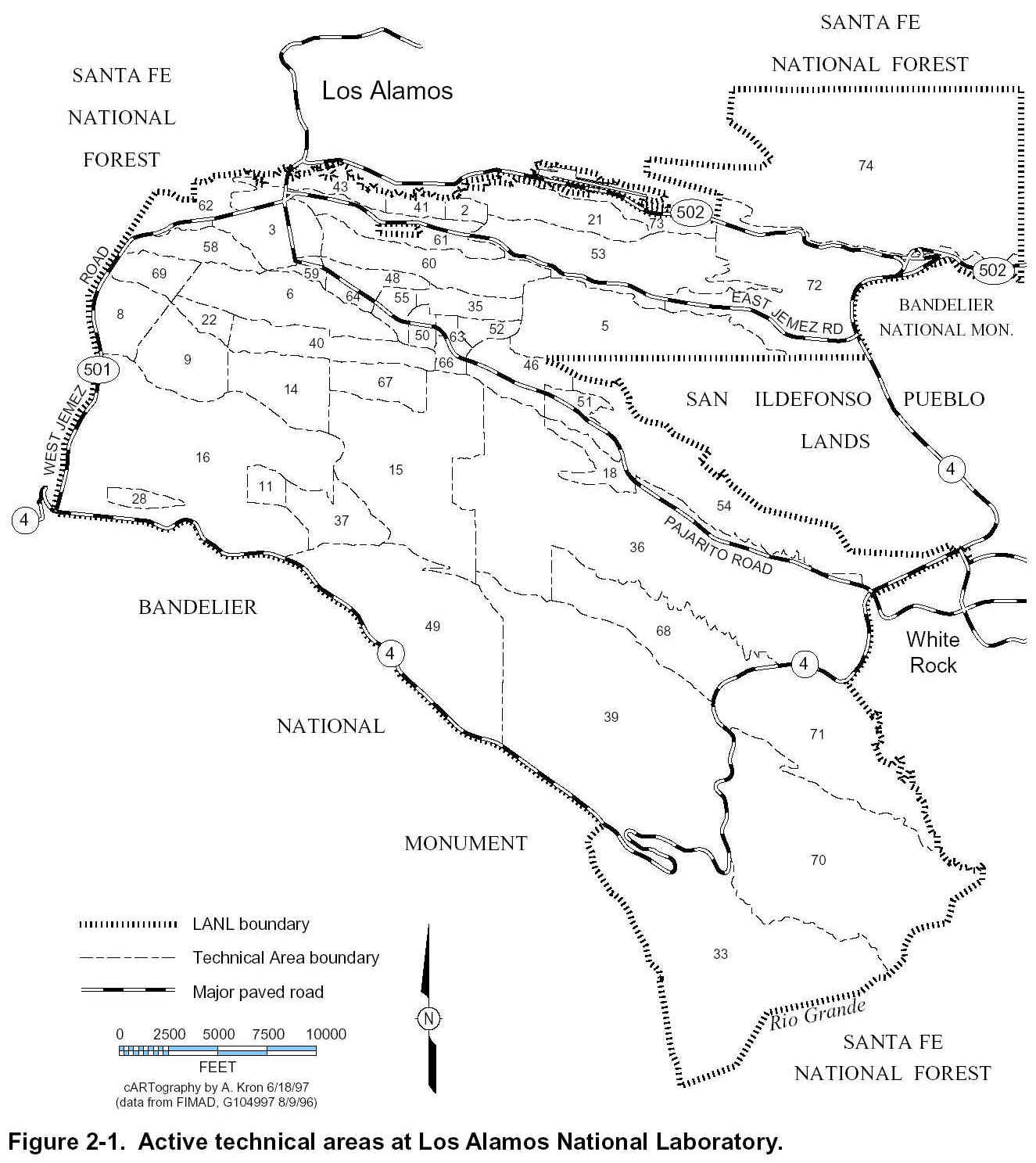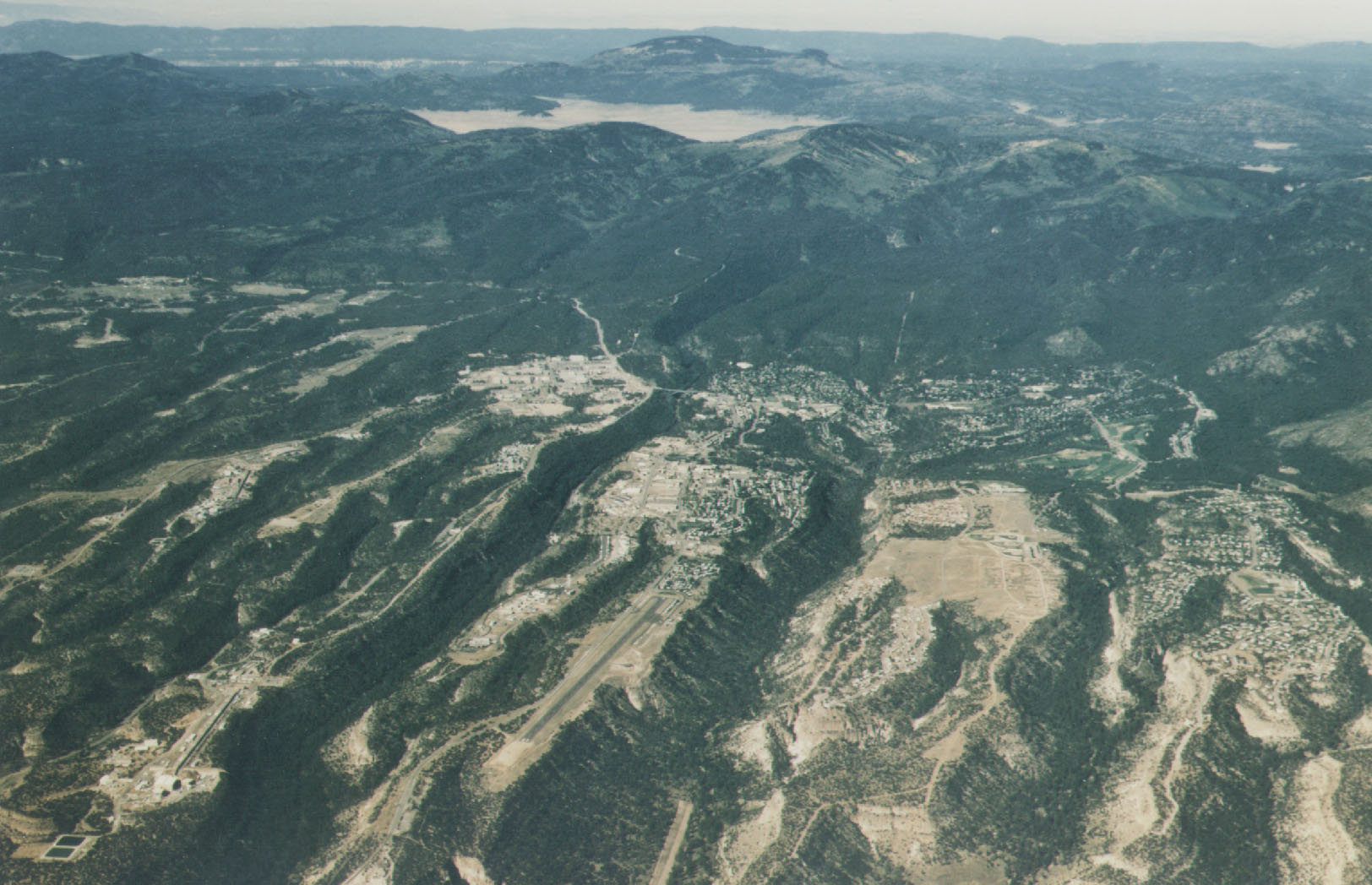
|
|
|
Los Alamos National Laboratory (LANL), located on approximately 40 square miles 25 miles northwest of Santa Fe, New Mexico, was founded in 1943 in order to research, develop and produce the world's first nuclear weapons as part of the Manhattan Project. LANL was the central facility that coordinated university and federal laboratories nationwide to produce radioactive materials and components for the weapons that were manufactured during World War II.
Robert Oppenheimer, the first director of LANL, selected the site in northern New Mexico because he had spent time there in his youth. The federal government overtook the Los Alamos Ranch School and many of the traditional homesteads of the area, LANL produced three initial nuclear weapons. "The Gadget" was detonated at 5:29 a.m. on July 16, 1945 at the Trinity Site located in the desert outside of Socorro, New Mexico. This explosion released a force equivalent to 21,000 tons of TNT. On August 6, 1945, "Little Boy," a weapon composed of uranium-235, was dropped over Hiroshima, Japan. "Fat Man," a plutonium weapon, was dropped over Nagasaki, Japan on August 9, 1945. It is estimated that these weapons killed as many as 200,000 people, many of them civilians.
Oversight of LANL then fell to the United States Atomic Energy Commission, which was formed by the federal government shortly after World War II. Following the end of the Cold War in 1989, LANL underwent scientific diversification and began its mission under the Stockpile Stewardship program. Stockpile Stewardship is a program through which the United States maintains its nuclear weapons arsenal without nuclear testing. After the Cold War, LANL also began to expand its missions under environmental cleanup and remediation. This was in large part due to the Federal Facilities Compliance Act of 1992. The Act was signed by President George H.W. Bush and requires that federal facilities, specifically the Department of Energy, comply with federal environmental laws. Although Stockpile Stewardship is ostensibly focused on maintaining the current nuclear weapons stockpile, many critics are concerned that the Department of Energy is slowly progressing towards producing weapons of new and modified designs or increasing the number of weapons in the arsenal, despite international treaties that prohibit such development. There are several existing or potential programs that are of concern currently, such as:
Furthermore, many are concerned that cleanup and environmental remediation at LANL is unsatisfactory and may be compromising the quality of our surface and ground water, air and soil. A series of management and safety scandals at LANL in the last several years has prompted the Department of Energy to open the LANL management contract to bidding for the first time since 1943. Thus far, only the University of California has managed LANL for the Department of Energy. Three entities have announced their intentions to bid. These are the Bechtel National Corporation in conjunction with the University of California, Lockheed Martin Corporation in conjunction with the University of Texas and Nuclear Watch of New Mexico in conjunction with Tri-Valley Communities Against a Radioactive Environment. Also as a result of recent scandals, including the site-wide shutdown of LANL in July 2004, many decision makers are beginning to question the activities performed at LANL. For example, Representative Bart Stupak (R-Michigan) recently stated at a Congressional hearing, "We have a lab here that is a constant problem. Why do we need this one? Is there any really unique science that can only be done there? Why do we need Los Alamos?" Stupak also stated his doubt that a new managing contractor will solve the problems of LANL, saying, "I remain skeptical as to whether the culture at Los Alamos will ever really change. The culture seems to be so poisonous at this point ... that it remains to be seen what can be done to truly fix this broken facility." The future of LANL is uncertain due to several factors that may effect its management and missions, such as:
|
 which previously inhabited the property, and built a scientific laboratory in their place. Scientists and their families were moved to Los Alamos from around the country in order to participate in the project, also code named "Project Y." The project was so secretive that even the president of the University of California, which managed LANL, Robert Sprout, was not aware of the nature of the work performed at Los Alamos.
which previously inhabited the property, and built a scientific laboratory in their place. Scientists and their families were moved to Los Alamos from around the country in order to participate in the project, also code named "Project Y." The project was so secretive that even the president of the University of California, which managed LANL, Robert Sprout, was not aware of the nature of the work performed at Los Alamos.
 Under the continued management of the University of California, LANL began development of the hydrogen bomb. LANL, in conjunction with nuclear weapons manufacturing sites nationwide, began producing large amounts of weapons as part of the arms race of the Cold War, in which the North Atlantic Treaty Organization, particularly the United States, maintained a tense rivalry with the Soviet Union.
Under the continued management of the University of California, LANL began development of the hydrogen bomb. LANL, in conjunction with nuclear weapons manufacturing sites nationwide, began producing large amounts of weapons as part of the arms race of the Cold War, in which the North Atlantic Treaty Organization, particularly the United States, maintained a tense rivalry with the Soviet Union. Recent reports indicate that contaminants from radioactive and hazardous waste buried at LANL may reach the Rio Grande through ground water pathways in 26 years or less. Moreover, LANL was recently permitted by the New Mexico Environment Department to continue burning or detonating depleted uranium and high explosives in the open environment. For more information, please see CCNS's Rio Grande Watershed Initiative information page or Clean Air Act information page.
Recent reports indicate that contaminants from radioactive and hazardous waste buried at LANL may reach the Rio Grande through ground water pathways in 26 years or less. Moreover, LANL was recently permitted by the New Mexico Environment Department to continue burning or detonating depleted uranium and high explosives in the open environment. For more information, please see CCNS's Rio Grande Watershed Initiative information page or Clean Air Act information page.